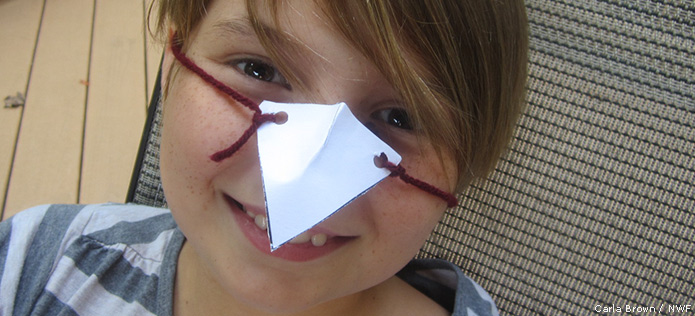
Find out how the shape of a bird’s beak helps it pick up and eat food.
What You Need
- Seed-sized beads or actual seeds
- Beans or large seeds like sunflower seeds
- Chopsticks
- 5-6 containers (can be varying sizes)
- Face cloth or piece of foam
- Greenery (a few small weeds)
- Juice, 1/8 cup
- Paper
- Rubber band
- Scissors
- Sieve – small one that will fit in one of your containers
- Straw
- String or yarn
- Tweezers
- Water
- Wrench or pliers
What You Do
- Gather up the supplies and spread them out on a table
Put all the beak simulating tools in one area, and all the pretend bird food together. - Encourage your participants to match the best beak tool to the food options
The hand-held sieve represents a waterfowl’s bill, and is used to pick up greenery from water. - The wrench picking up beans represents a bird that cracks seeds with its beak, such as a finch.
- The scissors and paper represent a bird beak that tears its food apart, like an eagle tearing open a fish.
- The straw represents a beak that collects nectar from flowers, such as a hummingbird.
- The chop sticks represent the beak of a bird that picks up worms or bugs from the ground, such as a robin.
To make it easier to pinch with the chopsticks, you could wrap a rubber band around one end. - The tweezers represent a woodpecker’s beak, and is used to pick out the food from either a piece of foam or a bunched up cloth.
- Offer print-outs of bird beak shapes
Participants can make their own beaks from whichever species they find most compelling. - Cut out the beak that you want to wear
You can decorate it, color it, or wear it plain.
Punch two holes in the beak where you can tie on the string or yarn.
Cut a piece of string or yarn big enough to wrap around your head. - Tie the yarn and string on the beak
Slide it over your head and now you have a beak to wear!










